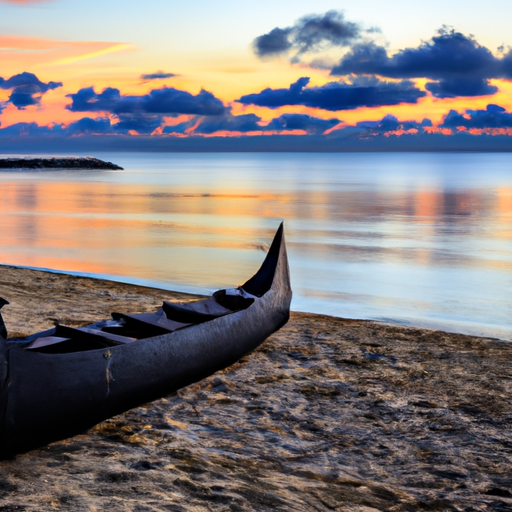Have you ever wondered how Maryland got its name? Well, the origin of this state’s name is not as straightforward as you might think. It actually has a fascinating story behind it. In this article, we will take a closer look at the history and the unique circumstances that led to the naming of Maryland. Prepare to be intrigued by the tale of how this charming state came to be known as Maryland.

Indigenous Origins
Native American Tribes in Maryland
Maryland has a rich history that begins long before European explorers arrived. The region that we now know as Maryland was home to several Native American tribes, each with their own unique culture and traditions. Some of the tribes that inhabited the area included the Piscataway, Nanticoke, and Susquehannock tribes. These tribes had a deep connection to the land and relied on its resources for survival. They played a significant role in shaping the early history of Maryland.
The Meaning Behind the Names
The names of many towns, rivers, and landmarks in Maryland have origins in the Native American languages spoken by the tribes who lived there. For example, the name “Maryland” itself is believed to have been derived from the Native American Algonquian word “Marege,” meaning “land of the water.” This is a fitting name for a state that is blessed with beautiful coastal landscapes and numerous waterways. The Native American influence can be seen and felt throughout the state.
European Exploration and Settlement
The Arrival of Captain John Smith
Maryland’s European history began with the arrival of Captain John Smith, an English explorer, in the early 17th century. Smith, who played a prominent role in the establishment of the Jamestown settlement in Virginia, explored the Chesapeake Bay area and became the first documented European to visit what is now Maryland. His explorations and interactions with Native American tribes paved the way for future European settlement in the region.
Early European Names Given to the Region
During the early years of European exploration, Maryland and its surrounding region were given various names by different explorers. For instance, Dutch explorer Adriaen Block referred to the area as “New Netherland.” Later, English colonists began to establish settlements in the region, and it became known as the “Province of Maryland,” named in honor of Queen Henrietta Maria, the wife of King Charles I of England. The European presence in the region continued to grow, with more settlers arriving and establishing permanent communities.
Maryland Charter
Granting the Title ‘Maryland’
Maryland was granted its charter on June 20, 1632, by King Charles I of England. The charter was given to Cecil Calvert, the second Lord Baltimore, who was a Catholic and desired a refuge for fellow Catholics in the New World. The charter granted the land between the Potomac River and the 40th parallel to Lord Baltimore, who would become the Proprietor of the new colony.
Honoring Queen Henrietta Maria
The decision to name the new colony “Maryland” was made to honor Queen Henrietta Maria, the wife of King Charles I. It was a gesture of gratitude to the queen for her Catholic faith and support for the colony. The name “Maryland” serves as a reminder of the historical ties that exist between England and the state, highlighting the influence of the monarchy during that time period.
Political Context
Maryland’s Founding as a Proprietary Colony
Maryland was founded as a proprietary colony, meaning that it was owned and governed by individual proprietors rather than directly by the English Crown. This system allowed the Calvert family, specifically Cecil Calvert and his descendants, to have considerable control over the colony. As proprietors, they had the authority to establish laws, grant land, and collect taxes. This unique form of governance set Maryland apart from other colonies in North America.
Cecil Calvert and his Father’s Legacy
Cecil Calvert, also known as Lord Baltimore, played a crucial role in the founding and development of Maryland. He sought to create a colony where Catholics could practice their religion freely, as they faced persecution in England at the time. Cecil Calvert’s father, George Calvert, had originally applied for the charter but passed away before it was granted. Cecil Calvert continued his father’s legacy, working diligently to establish a prosperous and tolerant colony.

Religious Freedom
Maryland as a Safe Haven for Catholics
Religious freedom was a significant factor in the establishment of Maryland. Cecil Calvert envisioned Maryland as a haven for Catholics who faced discrimination and persecution in England. The colony offered a sanctuary where individuals could practice their faith without fear of reprisal. This commitment to religious tolerance attracted many individuals seeking refuge, contributing to the diversity and unique character of early Maryland.
Toleration Act of 1649
In 1649, Maryland passed the Toleration Act, making it one of the first places in the English-speaking world to pass a law providing religious freedom for all Christians. The act was intended to promote religious harmony by granting freedom of worship to both Protestants and Catholics. While the act did not extend religious freedom to all religions, it represented an important step forward in the pursuit of religious tolerance.
Colonial Era
Life in Colonial Maryland
Life in colonial Maryland was shaped by a combination of Native American and European influences. The colony relied on agriculture, with tobacco becoming a significant cash crop. The economy thrived on the labor of indentured servants and later enslaved Africans. The social hierarchy was firmly established, with wealthy landowners holding much of the power and influence. Education and cultural activities flourished, contributing to the intellectual growth of the colony.
Role in the American Revolution
During the American Revolution, Maryland played a vital role in the struggle for independence. The state’s location along the eastern seaboard made it a key battleground in the conflict. Important events took place within its borders, such as the Battle of Baltimore, where Francis Scott Key wrote “The Star-Spangled Banner.” Maryland’s contribution to the war effort and the ideals of liberty helped shape the future of the nation.

Statehood
Ratifying the U.S. Constitution
Maryland became a state on April 28, 1788, when it ratified the United States Constitution. The people of Maryland recognized the importance of a strong central government and understood that unity and shared principles were necessary for the success of the newly formed nation. By joining the Union, Maryland solidified its commitment to the ideals of freedom and democracy.
Becoming the 7th State
Maryland’s admission to the Union as the 7th state marked an important milestone in the nation’s history. The state’s geographic and economic significance, as well as its cultural contributions, played a role in its inclusion as one of the original states. Maryland’s status as a border state between the North and the South would later have far-reaching consequences during the Civil War.
Evolution of the State
Cultural and Economic Development
Over time, Maryland experienced significant cultural and economic development. The state’s proximity to major cities such as Baltimore and Washington, D.C., led to the growth of industries such as manufacturing, shipping, and later, technology. Maryland’s diverse population contributed to a vibrant culture, with influences from various ethnic groups and traditions. The state became known for its culinary delights, such as crabs and Old Bay seasoning, which have become iconic symbols of Maryland’s unique identity.
Social and Political Changes
Throughout its history, Maryland has undergone various social and political changes. The Civil War, for example, tested the state’s loyalty as it was torn between the Union and the Confederacy. Maryland’s status as a border state led to divided loyalties and intense conflicts. The Civil Rights Movement in the 20th century also brought about significant social changes, as Maryland, like the rest of the nation, worked towards equality and justice for all its residents.
Symbols and Significance
State Flag and Seal
The Maryland state flag is one of the most recognizable and distinctive flags in the United States. It features the signature colors of Lord Baltimore’s family crest – black and gold – as well as the red and white cross of Saint George and the red and white cross of Saint Andrew. The design of the flag is a nod to Maryland’s colonial past and its ties to England. The state seal also reflects Maryland’s history, with its depiction of Lord Baltimore and his family coat of arms.
The Nickname ‘Old Line State’
Maryland is often referred to as the “Old Line State,” a nickname that dates back to the Revolutionary War. During the Battle of Long Island in 1776, a group of Maryland soldiers fought bravely, holding the line against the British forces. This act of valor earned them the nickname “the Old Line,” which has stuck with the state ever since. The nickname serves as a reminder of Maryland’s rich military history and its role in the birth of the nation.
Contemporary Maryland
Modern Industries and Economy
In modern times, Maryland boasts a diverse and thriving economy. The state is home to a wide range of industries, including technology, biotechnology, healthcare, defense, and tourism. Cities like Baltimore and Annapolis are hubs of innovation and economic activity. Being home to prestigious academic institutions and research centers, Maryland attracts top talent, fostering a culture of innovation and economic growth.
Notable Landmarks and Attractions
Maryland is known for its abundance of historical landmarks and attractions. One of the most famous landmarks is the U.S. Naval Academy in Annapolis, which has been training future Navy and Marine Corps officers since 1845. The state also boasts stunning natural wonders such as Chesapeake Bay, Assateague Island, and the Appalachian Mountains, which draw visitors from near and far. Additionally, Baltimore’s Inner Harbor and its world-renowned National Aquarium are must-see destinations for tourists.
Maryland’s history is a testament to the resilience, diversity, and strength of its people. From its indigenous origins to its role in the founding of the nation, the state’s story is one of continuous growth and transformation. Maryland’s past is intricately woven into its present, giving it a unique identity and a place of significance in American history.

